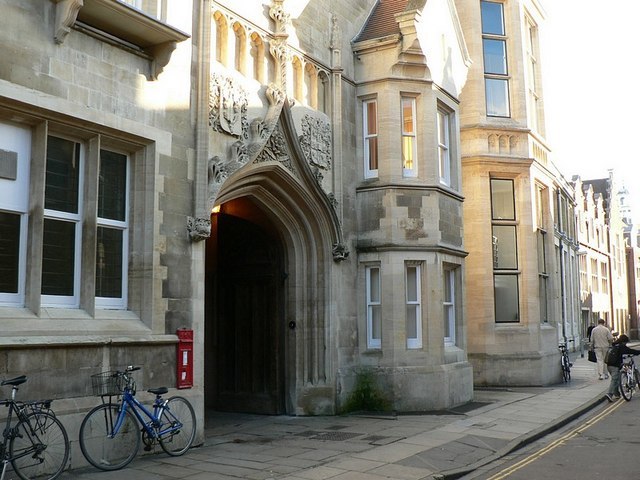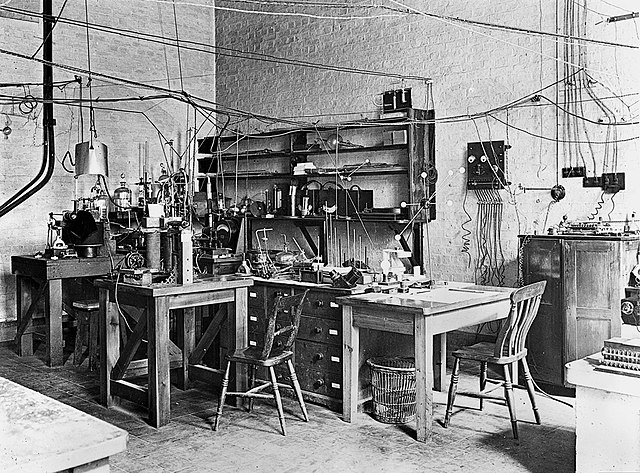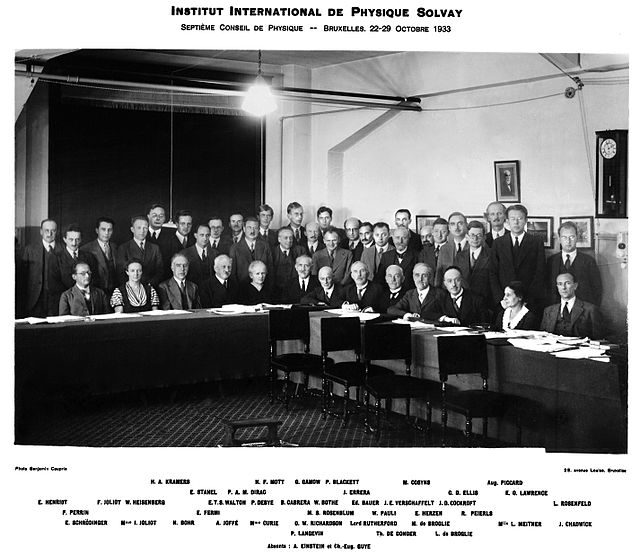Sir James Chadwick, was an English physicist who was awarded the 1935 Nobel Prize in Physics for his discovery of the neutron in 1932. In 1941, he wrote the final draft of the MAUD Report, which inspired the U.S. government to begin serious atom bomb research efforts. He was the head of the British team that worked on the Manhattan Project during World War II. He was knighted in Britain in 1945 for his achievements in physics.
Chadwick c. 1945
The original building of the Cavendish Laboratory was the home of some of the great discoveries in physics. It was founded in 1874 by the Duke of Devonshire (whose family name was Cavendish), and its first professor was James Clerk Maxwell. The Laboratory has since moved to West Cambridge.
Sir Ernest Rutherford's laboratory
"Red brick" Victoria Building at the University of Liverpool
The discovery of the neutron and its properties was central to the extraordinary developments in atomic physics in the first half of the 20th century. Early in the century, Ernest Rutherford developed a crude model of the atom, based on the gold foil experiment of Hans Geiger and Ernest Marsden. In this model, atoms had their mass and positive electric charge concentrated in a very small nucleus. By 1920, isotopes of chemical elements had been discovered, the atomic masses had been determined to be (approximately) integer multiples of the mass of the hydrogen atom, and the atomic number had been identified as the charge on the nucleus. Throughout the 1920s, the nucleus was viewed as composed of combinations of protons and electrons, the two elementary particles known at the time, but that model presented several experimental and theoretical contradictions.

James Chadwick at the 1933 Solvay Conference. Chadwick had discovered the neutron the year before while working at Cavendish Laboratory.
Replica of Aston's third mass spectrometer
Ernest Rutherford
Seventh Solvay Conference, 1933.








